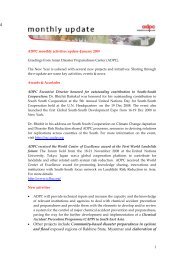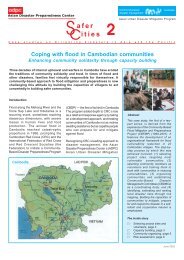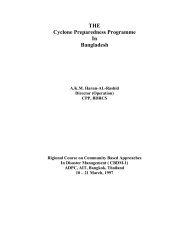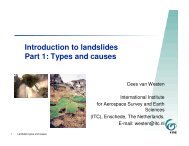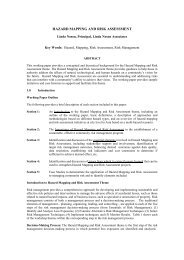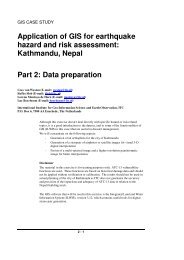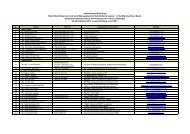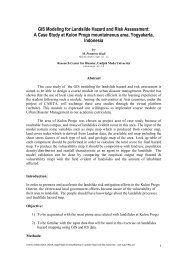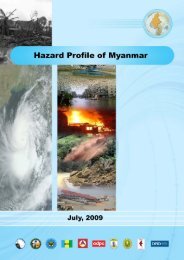community-based disaster risk management and the media media kit
community-based disaster risk management and the media media kit
community-based disaster risk management and the media media kit
Create successful ePaper yourself
Turn your PDF publications into a flip-book with our unique Google optimized e-Paper software.
138<br />
MEDIA KIT<br />
Disaster <strong>management</strong> is a series of continuous activities<br />
that are carried out to mitigate <strong>the</strong> impact of a <strong>disaster</strong>.<br />
The activities are conducted before, during <strong>and</strong> after <strong>the</strong><br />
<strong>disaster</strong> strikes. When a <strong>disaster</strong> occurs, initial actions<br />
include <strong>the</strong> provision of fi rst aid <strong>and</strong> emergency aid, <strong>and</strong><br />
<strong>the</strong> distribution of relief items. Post-<strong>disaster</strong> actions include<br />
rehabilitation <strong>and</strong> reconstruction.<br />
Just because a <strong>disaster</strong> has not yet occurred, that does not<br />
mean that <strong>the</strong>re are no <strong>disaster</strong> <strong>management</strong> activities.<br />
In <strong>disaster</strong> prone areas, it is necessary to implement<br />
<strong>risk</strong> mitigation to reduce <strong>the</strong> negative consequences of<br />
potential <strong>disaster</strong>s.<br />
The Indonesian Red Cross (PMI), in cooperation with <strong>the</strong><br />
Danish Red Cross (DRC), is implementing Community<strong>based</strong><br />
Disaster Preparedness (CBDP) <strong>and</strong> Community<strong>based</strong><br />
Risk Reduction (CBRR) programs. The programs<br />
are quite similar, as <strong>the</strong> goal of both is to reduce human<br />
suffering <strong>and</strong> loss of livelihood when <strong>disaster</strong> strikes. The<br />
two programs are not merely responsive, but are carried<br />
out before <strong>disaster</strong> hits.<br />
So how can <strong>the</strong> impact of a <strong>disaster</strong> be reduced before<br />
it happens? Is it really possible to do this? Certainly.<br />
When fl oods strike, it is diffi cult for communities to gain<br />
access to clean water, which forces <strong>the</strong> people to use<br />
unsanitary water <strong>and</strong> this leads to outbreaks of disease.<br />
We should <strong>the</strong>refore think about how to procure clean<br />
water for fl ood prone areas to avoid <strong>the</strong> emergence of<br />
various diseases.<br />
Of course, it is also important to think of physical ways to<br />
combat fl ooding, such as <strong>the</strong> construction of dikes. But<br />
when local conditions make it too diffi cult to build a dike,<br />
<strong>the</strong>n <strong>the</strong> procurement of clean water becomes <strong>the</strong> priority<br />
within <strong>the</strong> framework of <strong>disaster</strong> mitigation. Examples of<br />
o<strong>the</strong>r forms of <strong>disaster</strong> mitigation include reforestation, <strong>the</strong>



